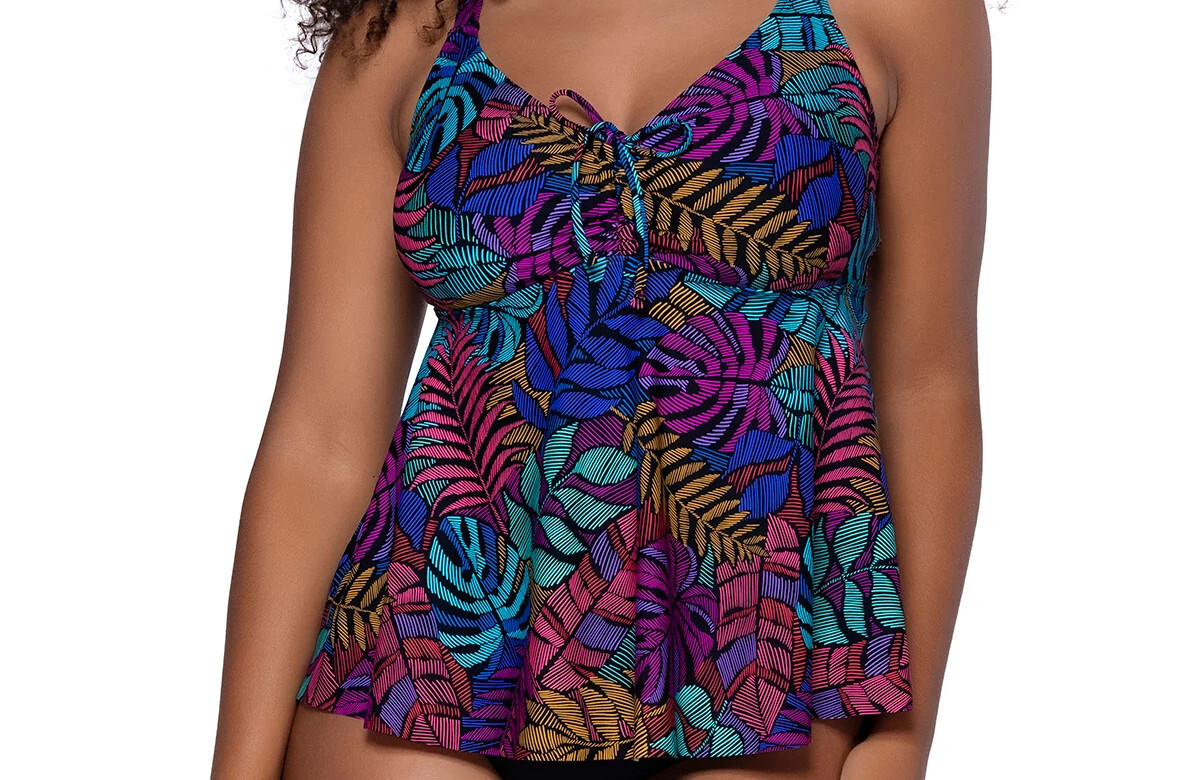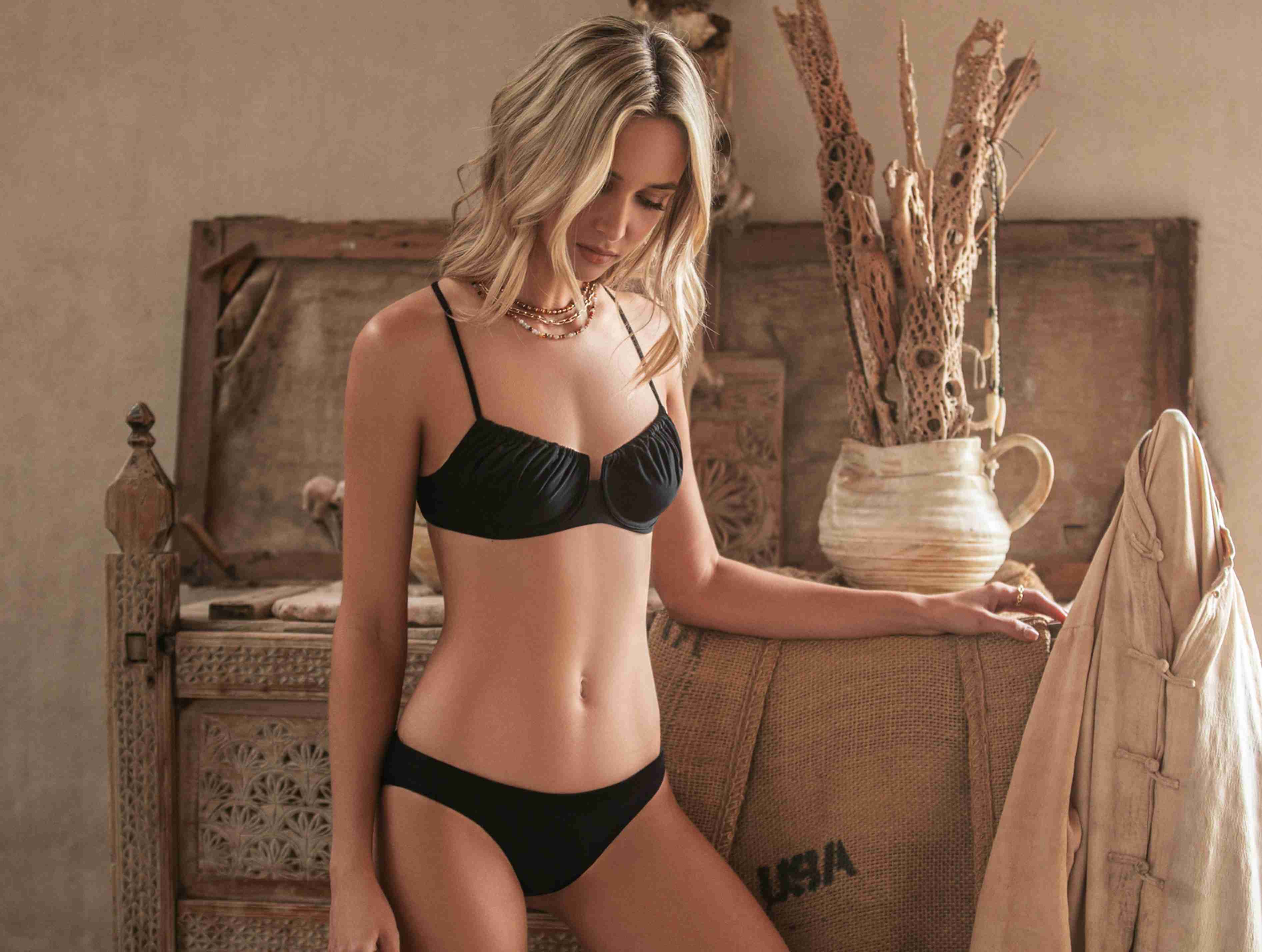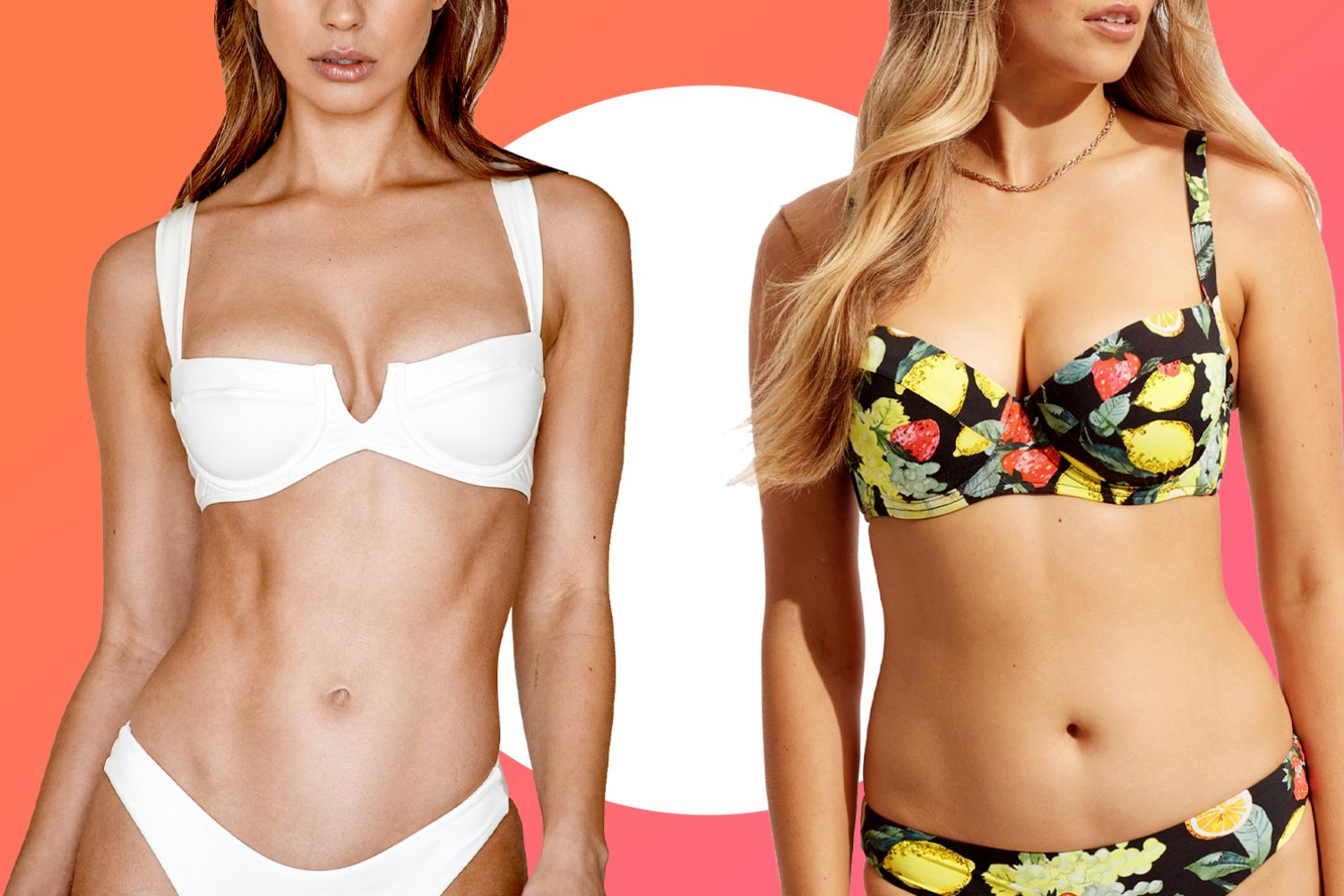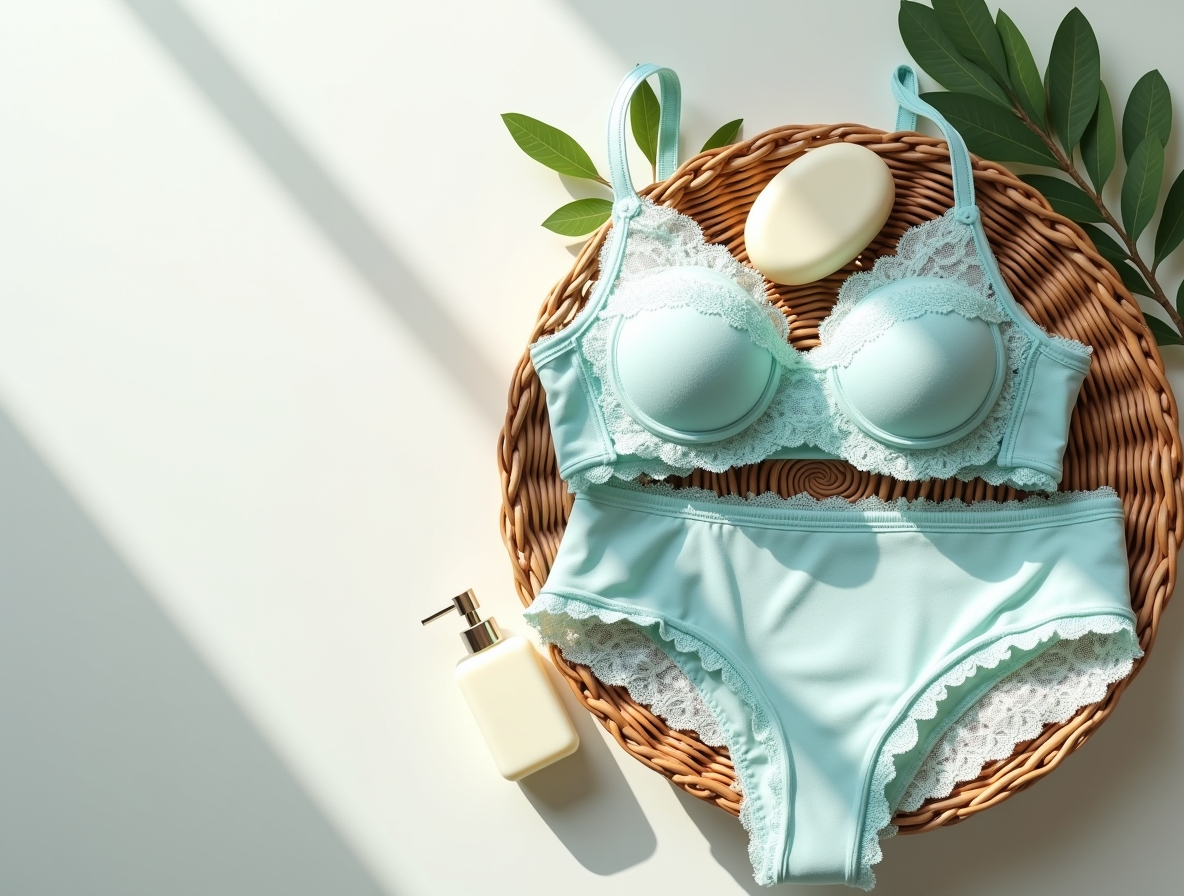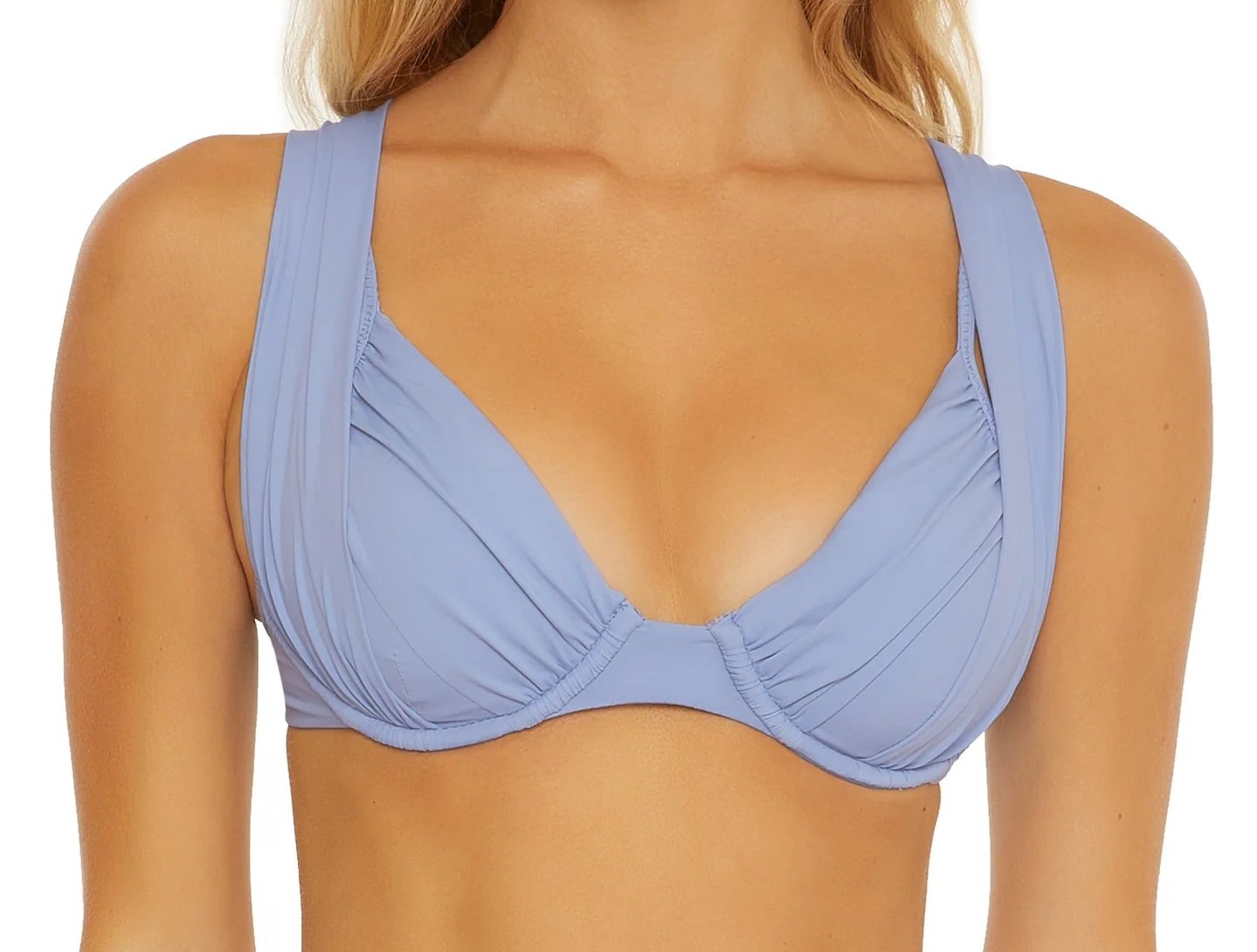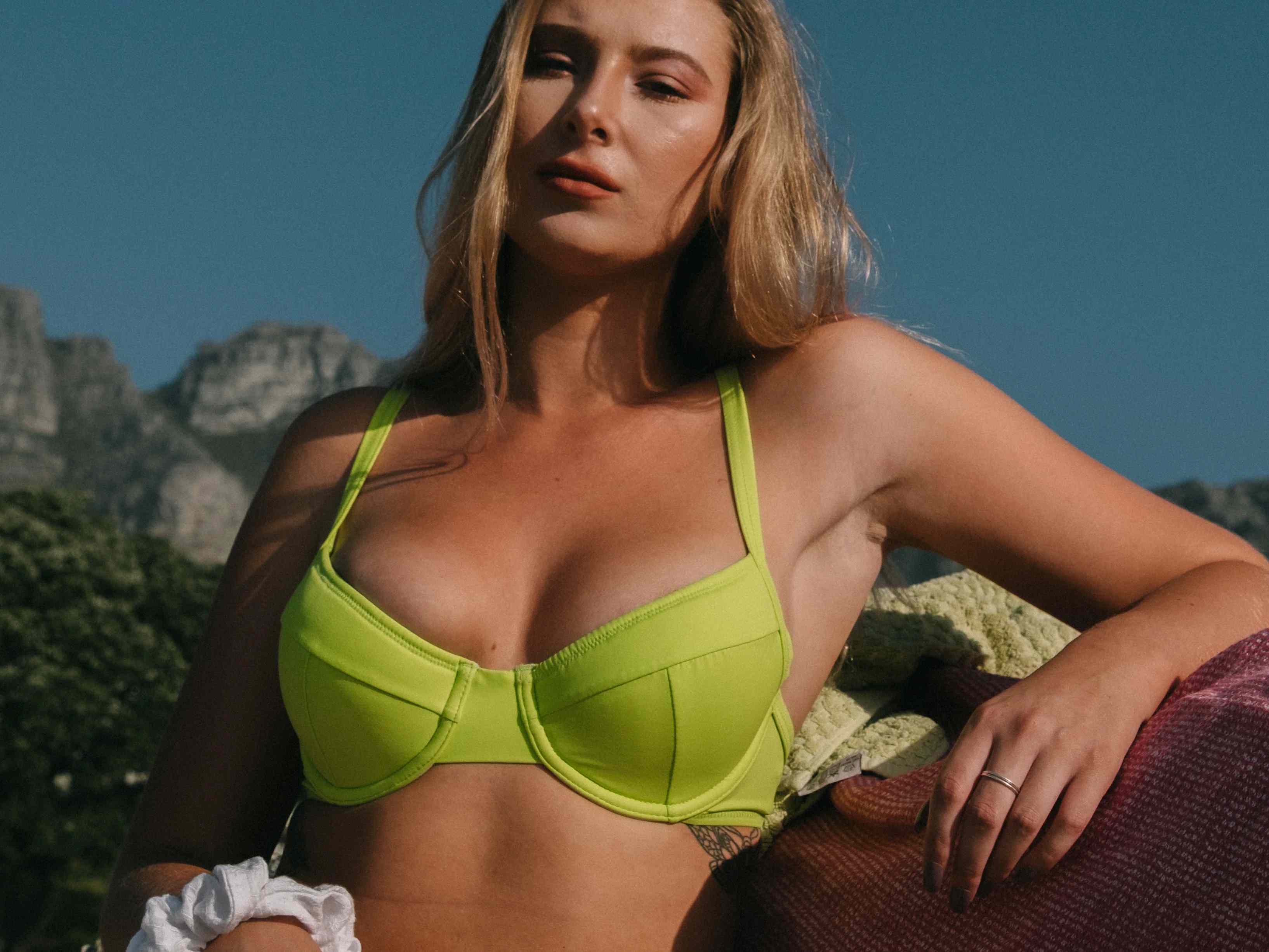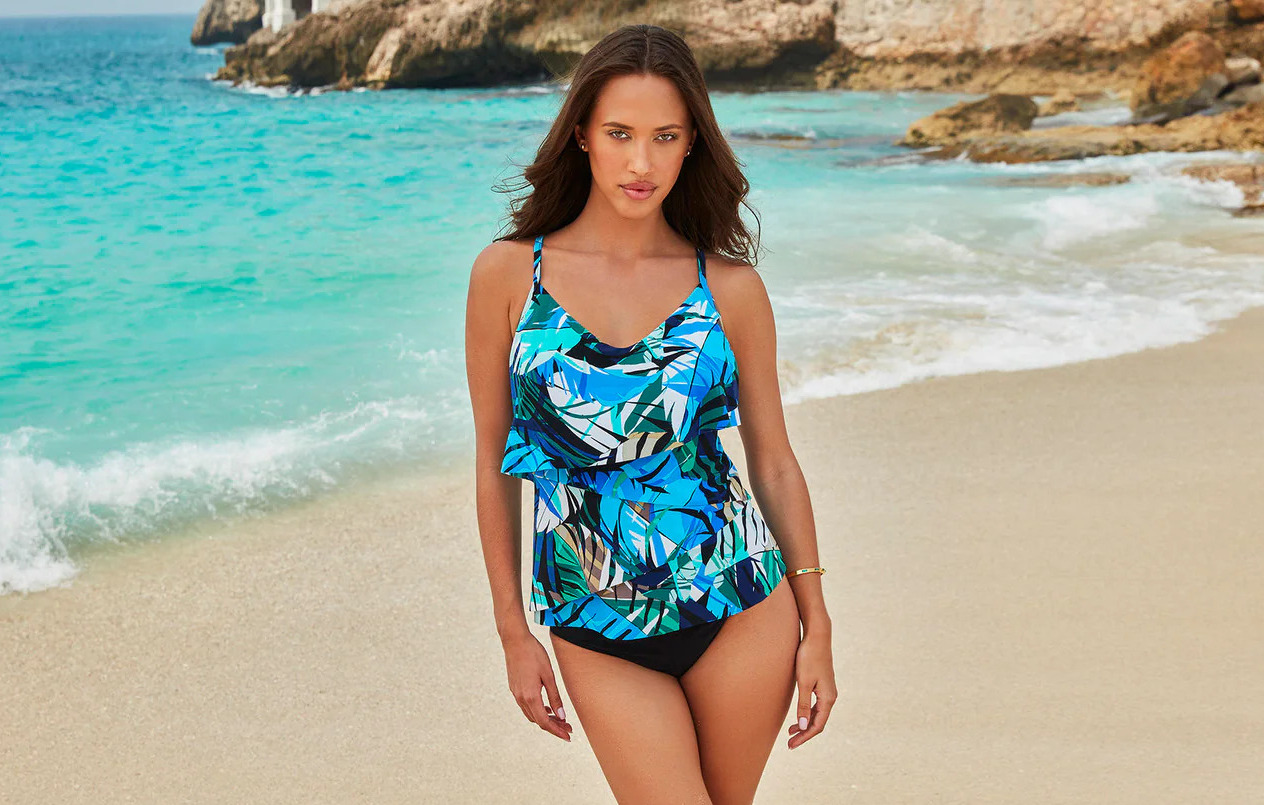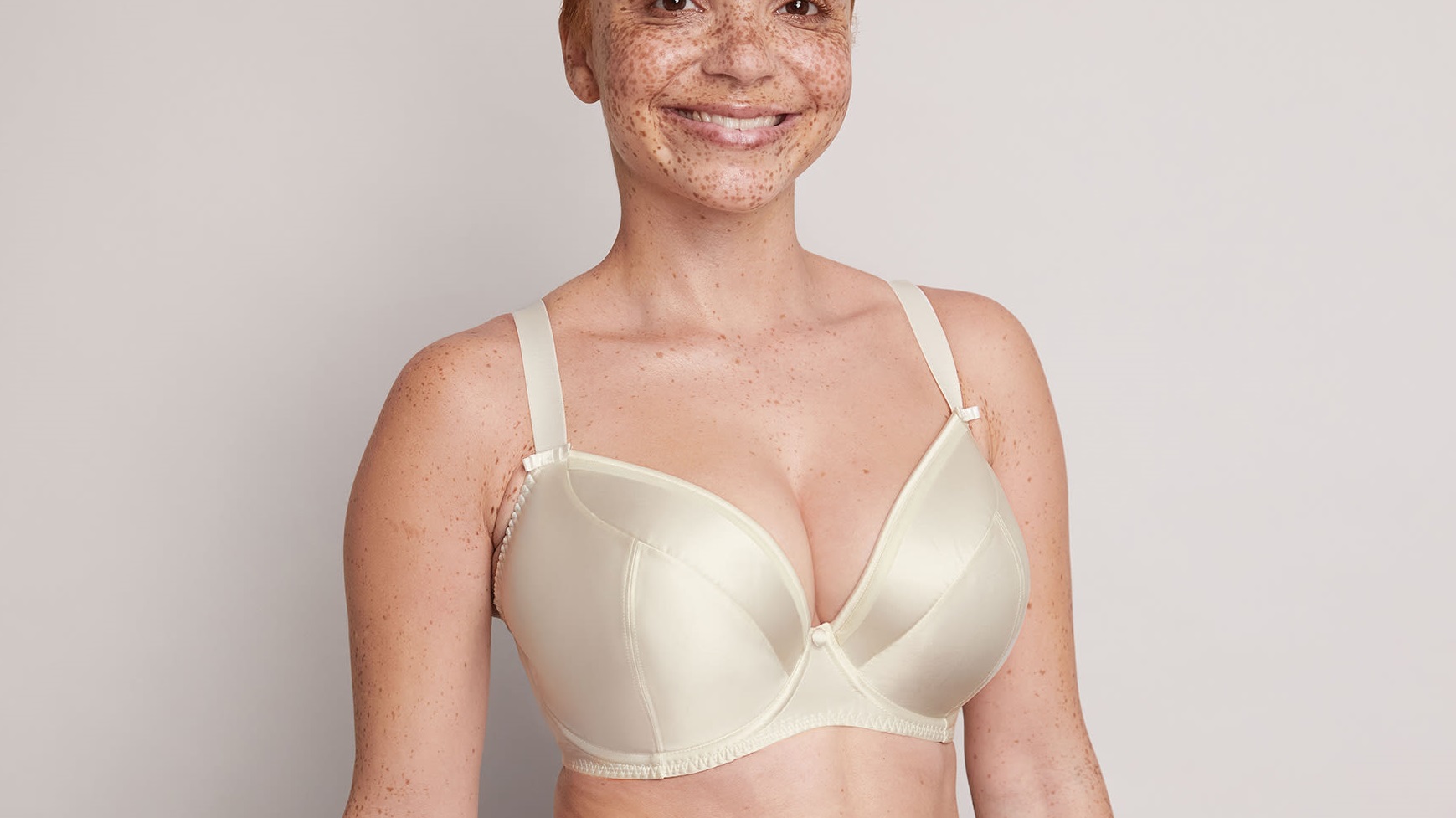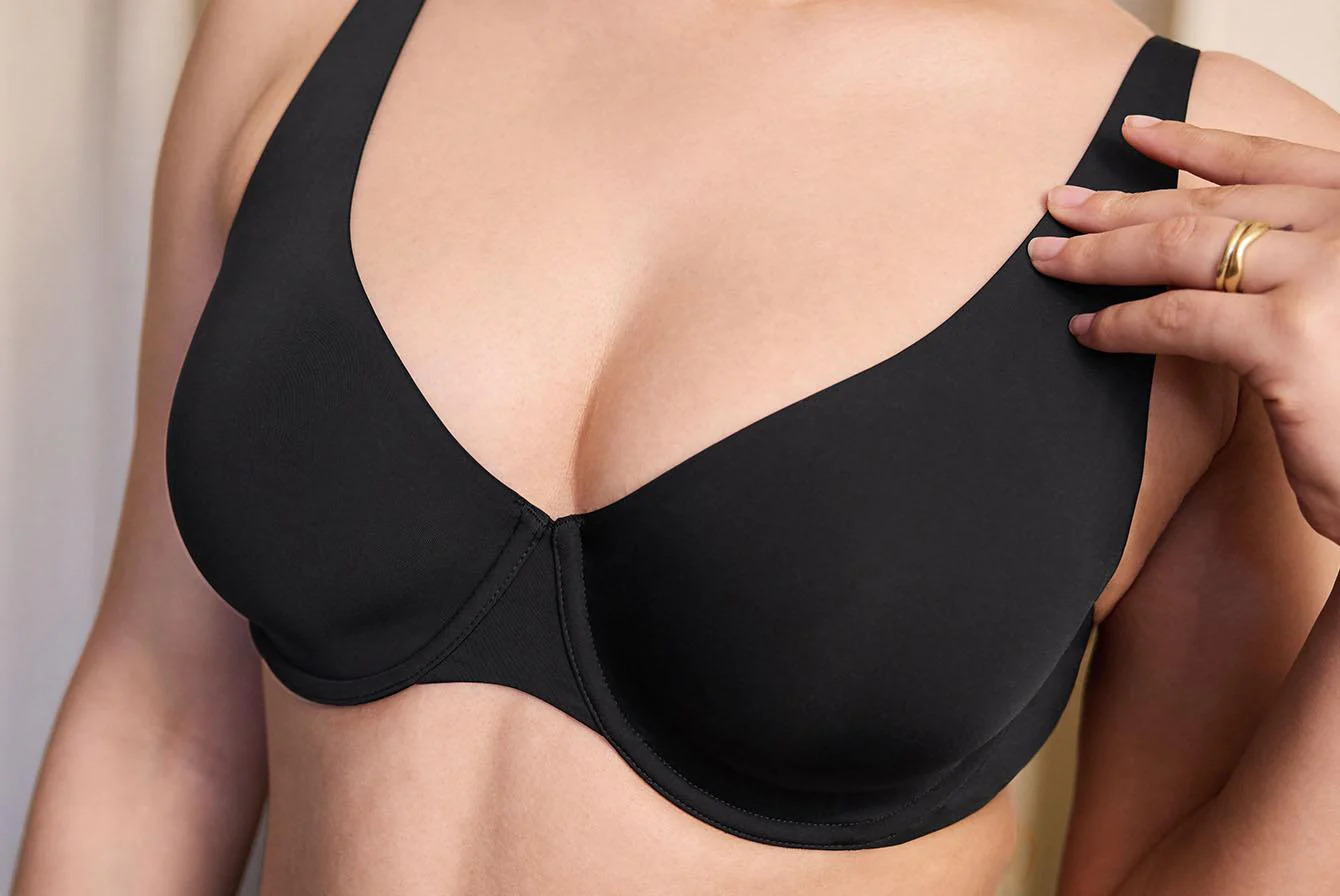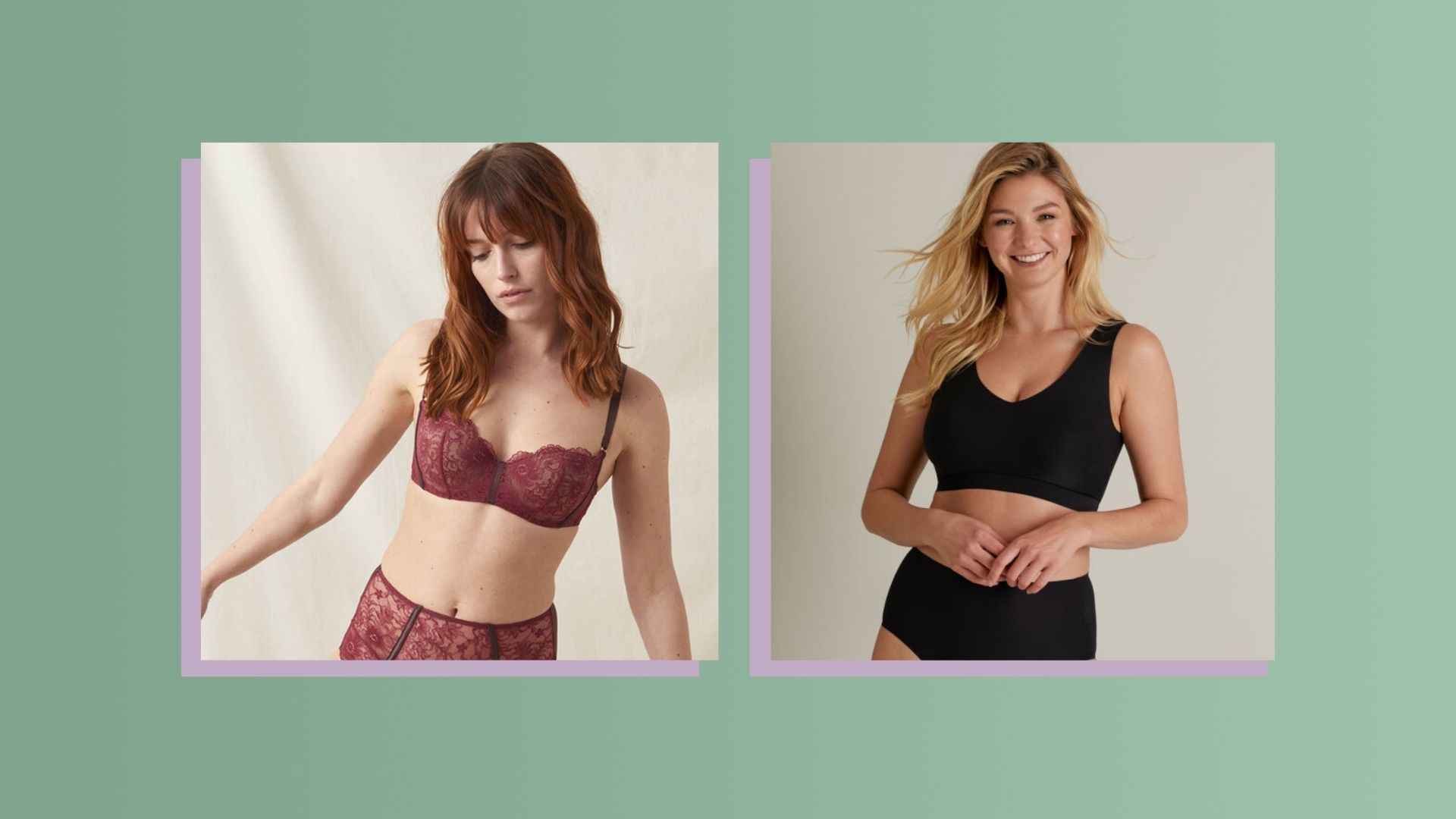Home>Women's Underwear>Bras>What Is Underwire Bra
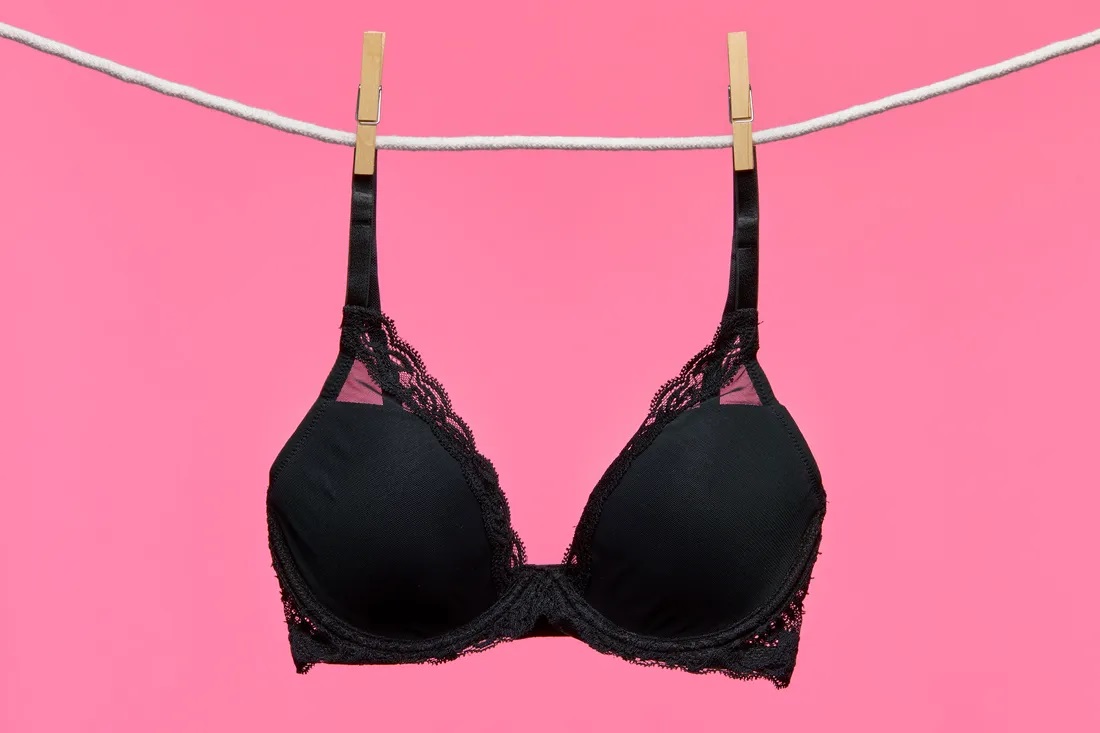

Bras
What Is Underwire Bra
Modified: August 3, 2023
Discover what underwire bras are and how they provide support and shaping. Explore different types of bras and find the perfect fit for you. Shop a wide selection of bras from popular brands.
(Many of the links in this article redirect to a specific reviewed product. Your purchase of these products through affiliate links helps to generate commission for Under-tec.com, at no extra cost. Learn more)
Table of Contents
Introduction
When it comes to choosing the right bra, women have different preferences and needs. One popular style that has gained widespread recognition is the underwire bra. Loved by some, loathed by others, underwire bras have become a staple in many women’s wardrobes.
An underwire bra is a type of brassiere that features a U-shaped wire sewn into the bottom of each cup. This wire provides additional support and structure by following the natural curve of the breasts and ensuring a more lifted and defined shape.
The history of underwire bras can be traced back to the early 20th century when women started searching for ways to enhance their figures and achieve a desired silhouette. Over the years, underwire bras have evolved, incorporating new materials and designs to offer even more comfort and support.
While underwire bras have their benefits, such as providing a flattering shape and extra support, there are also potential drawbacks to consider. Some women find underwire bras uncomfortable, particularly if they are not the right size or if the wire digs into their skin.
There are various types of underwire bras available on the market, catering to different body types, preferences, and clothing styles. From balconette to plunge, padded to non-padded, the options are vast, ensuring that every woman can find the perfect underwire bra for her needs.
Proper fitting and sizing of underwire bras are crucial to ensure comfort and support. It is essential to get fitted by a professional or educate oneself on how to measure for the correct size. Ill-fitting underwire bras can lead to discomfort, pain, and even have potential health implications.
Maintaining underwire bras is also important to ensure their longevity. Proper care and storage can help prevent warping of the wires and ensure that the bras stay in good condition for as long as possible.
In this article, we will delve into the world of underwire bras, exploring their history, benefits, drawbacks, different types, fitting and sizing methods, as well as maintenance tips, so that you can make an informed decision about whether underwire bras are the right choice for you.
Explanation of an Underwire Bra
An underwire bra is a type of brassiere that incorporates a U-shaped wire, typically made of metal or plastic, into the bottom of each cup. The purpose of this wire is to provide additional support and shape to the breasts by following their natural contour.
The underwire functions as a frame, encircling the lower portion of the breasts and extending along the sides. This helps to lift and separate the breasts, creating a more defined and lifted appearance. The wire is usually padded or covered with fabric to prevent discomfort or irritation to the skin.
In addition to support, the underwire bra offers shaping benefits. The wire helps to shape the breasts by providing gentle resistance against the weight of the breast tissue, allowing for a more rounded and lifted silhouette. This can enhance the overall appearance of the bust, especially under form-fitting or low-cut clothing.
Underwire bras are available in a variety of styles, such as full coverage, balconette, plunge, and demi-cup. Each style offers different levels of coverage and support, allowing women to choose the style that best suits their needs and preferences.
It’s important to note that not all bras with underwires are the same. The width, length, and shape of the underwire can vary depending on the brand and design. Some underwires may be more flexible or have additional reinforcement, while others may be more rigid. The placement of the underwire in the bra cups can also differ, accommodating different breast shapes and sizes.
While underwire bras are most commonly associated with providing support and shaping, they can also have additional features. Some underwire bras may have padding or removable inserts for added lift and cleavage. Others may offer adjustable straps or special back closures for personalized comfort and fit.
Overall, underwire bras are a popular choice for women looking for extra support, enhanced shape, and a lifted appearance. However, it is important to find the right fit and choose a style that suits your individual needs and comfort preferences. In the following sections, we will explore the history of underwire bras, as well as the benefits, potential drawbacks, and various types available in the market.
History of Underwire Bras
The concept of using underwire in bras dates back to the early 20th century. During this time, women began to embrace a more voluptuous and curvaceous figure, resulting in a growing demand for undergarments that could enhance their natural assets.
In 1893, a New York City socialite named Marie Tucek patented a device called the “Breast Supporter.” This early version of the underwire bra featured metal or bone supports sewn into the fabric to provide lift and shape to the breasts. However, Tucek’s invention did not gain widespread popularity at the time.
The implementation of underwire in bras gained significant traction in the 1930s. A French designer named Marcel Rochas is often credited with being the first to introduce the underwire bra as we know it today. His design revolutionized the lingerie industry by incorporating metal underwire into the cups to create structure and support.
Another prominent figure in the history of underwire bras is Howard Hughes. Known for his entrepreneurial endeavors, Hughes requested that the engineering department of his company, Hughes Aircraft, develop a bra design with underwires for actress Jane Russell. This led to the creation of the first underwire bra that became widely available on the market.
As the demand for underwire bras grew, more fashion designers and manufacturers began to integrate underwire technology into their lingerie collections. The 1950s saw the rise of the bullet bra, a distinctive style that featured exaggerated, pointed cups supported by underwires. This iconic style, popularized by movie stars like Marilyn Monroe, became synonymous with the fashion trends of the era.
Throughout the decades, underwire bras continued to evolve and adapt to changing fashion preferences and advancements in materials and construction techniques. The incorporation of various fabrics, padding, and styles has allowed for a wide range of underwire bras suitable for different body types and personal preferences.
Today, underwire bras are available in countless designs, offering a diverse selection to cater to women with varying needs and tastes. From everyday bras to special occasion lingerie, the underwire bra has become a staple in many women’s wardrobes.
Despite the popularity and widespread use of underwire bras, it is essential to note that they may not be suitable for everyone. Some women find underwire bras uncomfortable or experience discomfort if the underwire is not properly fitted. It’s important to ensure the bra is in the correct size and style to provide both comfort and support.
In the following sections, we will explore the benefits and potential drawbacks of wearing underwire bras, as well as the different types available in the market today.
Benefits of Wearing an Underwire Bra
Underwire bras offer several benefits that make them a popular choice among women. Here are some of the advantages of wearing an underwire bra:
1. Enhanced Support: One of the primary benefits of underwire bras is the added support they provide. The U-shaped wire fitted underneath the cups helps lift the breasts, preventing sagging and creating a more youthful appearance. This support is especially beneficial for women with larger breasts or those who desire a more lifted and defined shape.
2. Improved Shape: Underwire bras are designed to shape the breasts, giving them a more rounded and lifted appearance. The wire helps to separate and define the breasts, creating a flattering and symmetrical silhouette under clothing. This can boost confidence and enhance the overall look of outfits, particularly when wearing fitted or low-cut tops.
3. Greater Comfort: When properly fitted, underwire bras can provide a comfortable and secure fit. The underwire acts as a frame, distributing the weight of the breasts evenly across the chest, reducing strain and discomfort. Additionally, the wire can help prevent the breasts from pressing against the ribcage, reducing potential irritation and chafing.
4. Added Support for Physical Activities: For women who engage in physical activities, such as sports or exercise, underwire bras offer an extra layer of support. The reinforced structure provided by the underwire minimizes breast movement and reduces the risk of discomfort or pain during high-impact activities.
5. Enhanced Cleavage: Underwire bras with the right padding and design can enhance cleavage, creating a more pronounced and appealing bustline. This can be beneficial when wearing formal attire or for special occasions when a more emphasized cleavage is desired.
6. Wide Range of Styles: Underwire bras come in various styles and designs to cater to different tastes and preferences. From balconette to plunge, push-up to minimizer, there is an underwire bra available for every body type and outfit choice. This versatility allows women to find a style that suits their unique needs and desired look.
While the benefits of underwire bras are apparent, it’s essential to note that individual comfort and fit will vary. Finding the right size and style of underwire bra is crucial to ensure maximum comfort and support. Ill-fitting bras can lead to discomfort, red marks, and even long-term health issues. It is recommended to get professionally fitted or educate oneself on proper measuring techniques to ensure the best fit.
In the next section, we will explore some potential drawbacks and considerations associated with wearing underwire bras.
Potential Drawbacks of Wearing an Underwire Bra
While underwire bras offer numerous benefits, it is important to consider potential drawbacks associated with wearing them. Here are some of the potential drawbacks to keep in mind:
1. Discomfort: Some women find underwire bras uncomfortable, particularly if they are not the right size or if the wire digs into their skin. The pressure exerted by the underwire can cause discomfort, especially during extended periods of wear.
2. Restriction of Movement: Underwire bras with a snug fit and strong underwire may limit a woman’s range of movement. Activities that require a wider range of motion, such as yoga or certain sports, may be hindered by the rigid structure of the underwire.
3. Difficulty in Finding the Right Fit: Due to the varied shapes and sizes of breasts, finding the perfect fit for an underwire bra can be challenging. It may take several attempts to find a bra that provides both comfort and support. In some cases, women with unique breast shapes or sizes may find it challenging to find an underwire bra that properly accommodates their specific needs.
4. Wire Malfunction: Over time, the underwire may become damaged or distorted, leading to discomfort or poking. This can occur through regular wear and tear, improper washing, or the natural ageing process of the bra. It’s important to inspect underwire bras regularly for any signs of wire damage to ensure continued comfort and support.
5. Health Concerns: There have been anecdotal claims linking the prolonged use of underwire bras to health issues such as restricted lymph flow and increased risk of breast cancer. However, no scientific evidence supports these claims. It is important to note that wearing a properly fitting underwire bra that does not cause discomfort or constriction should not pose any health risks.
6. Skin Irritation: In some cases, the underwire of a bra may cause irritation or redness on the skin, particularly if the wire is not padded or covered with fabric. This can be a result of friction or pressure exerted by the wire on the skin. Choosing bras with padded or fabric-covered wires can help minimize irritation.
Despite these potential drawbacks, many women find underwire bras to be a comfortable and supportive option. The key is to prioritize finding the right fit and style that suits individual needs and preferences. Trying on different brands, sizes, and styles can help determine the best underwire bra for one’s unique body shape and comfort level.
In the following sections, we will explore the different types of underwire bras available and discuss proper fitting and sizing techniques to ensure optimal comfort and support.
Different Types of Underwire Bras
Underwire bras come in a wide array of styles, each designed to cater to different preferences, body types, and clothing styles. Here are some of the most common types of underwire bras:
1. Balconette: Balconette bras have a lower cut and a horizontal cup line, providing a lifted and rounded shape to the bust. They are particularly suitable for low-cut or square-neckline tops, as they enhance the appearance of cleavage while providing excellent support.
2. Plunge: Plunge bras have a deep V-shaped neckline, making them ideal for plunging or low-cut outfits. The low center front showcases cleavage while still offering adequate support and uplift.
3. T-shirt: T-shirt bras have seamless, molded cups that offer a smooth and rounded shape under tight-fitting or lightweight tops. They are designed to eliminate any visible lines or seams, providing a seamless look.
4. Push-up: Push-up bras are designed to enhance cleavage by lifting the breasts and pushing them closer together. They usually have padding or inserts in the lower portion of the cup, providing a fuller and more voluminous appearance.
5. Demi-cup: Demi-cup bras have cups that cover about half to three-quarters of the breast, offering a sexy and alluring look. They are suitable for outfits with lower necklines and provide a natural lift and support.
6. Sports: Sports bras with underwire provide maximum support and minimize breast movement during physical activities. They are designed to reduce bounce and provide additional structure and comfort, making them ideal for high-impact exercises.
7. Minimizer: Minimizer bras are designed for women with larger breasts who want to create a more streamlined silhouette. They distribute the breast tissue evenly, minimizing projection and creating the illusion of a smaller bust.
8. Convertible: Convertible bras feature detachable or adjustable straps that can be rearranged to suit different outfit styles. They provide versatility and allow for various strap configurations such as halter-neck, crisscross, or strapless, making them perfect for different clothing options.
9. Full Coverage: Full coverage bras offer maximum coverage and support, providing a seamless and comfortable fit for women with larger breasts. They ensure full containment of the breasts and distribute the weight evenly across the chest.
It’s essential to keep in mind that each brand may have slight variations in their designs and terminology. It’s recommended to try on different styles and brands to find the underwire bra that offers the most comfortable fit and suits individual preferences.
In the following sections, we will delve into proper fitting and sizing techniques for underwire bras, as well as tips on maintaining their longevity and performance.
Proper Fitting and Sizing of Underwire Bras
Getting the right fit and size is crucial when it comes to underwire bras. Proper fitting ensures optimal comfort, support, and a flattering silhouette. Here are some essential tips for finding the perfect fit for your underwire bras:
1. Measurements: Start by taking accurate measurements of your bust and underbust using a flexible tape measure. Measure the fullest part of your bust while wearing a non-padded bra, and measure around your ribcage just below your breasts. These measurements will help determine your bra size.
2. Band Size: The band of the bra is responsible for most of the support, so it should fit snugly around your ribcage without digging in or riding up. If the band feels too tight, try going up a band size. If it feels too loose, consider going down a band size. The band should be parallel to the ground and sit horizontally across your back.
3. Cup Size: The cups should fully encompass the breasts without any spillage or gaps. If the cups are too small, your breasts may bulge out or overflow. If the cups are too large, there may be empty space between the bra and your breasts. Adjust the cup size accordingly until you achieve a smooth, contoured fit.
4. Underwire Placement: The underwire should encase the entire underside of each breast, following the natural curve of the breast tissue. It should sit flat against your ribcage without poking or digging into your skin. If the underwire is uncomfortable or causing discomfort, try a different size, style, or brand to find a better fit.
5. Comfort: Pay attention to overall comfort when trying on underwire bras. The straps should be snug but not digging into your shoulders, and they should be adjustable for a personalized fit. The bra should feel supportive and secure without causing any discomfort, red marks, or irritation on your skin.
6. Try Different Styles and Brands: Not all underwire bras will fit the same, even if they are labeled with the same size. Each brand and style may have slight variations in their sizing and fit. Try on a variety of styles and brands to find the ones that work best for your unique shape and comfort preferences.
7. Get Professionally Fitted: If you are uncertain about your size or finding the right fit, consider getting professionally fitted by a lingerie specialist. They have expertise in fitting and can provide valuable advice on the best underwire bras for your body type and needs.
Remember, the size and shape of your breasts may change over time due to factors such as weight fluctuations, pregnancy, or aging. It is essential to re-evaluate your bra size periodically and adjust accordingly to ensure continued comfort and support.
In the next section, we will delve into some helpful tips for maintaining and caring for your underwire bras to prolong their lifespan and performance.
Tips for Maintaining Underwire Bras
Proper maintenance and care are essential for preserving the longevity and performance of your underwire bras. Here are some helpful tips to keep your bras in great condition:
1. Hand Washing: Hand washing is the preferred method for cleaning underwire bras. Fill a basin or sink with lukewarm water and mild detergent specifically designed for delicate fabrics. Gently agitate the bras in the soapy water, paying attention to the areas around the underwire. Rinse thoroughly and squeeze out excess water without twisting or wringing the bras.
2. Avoid Machine Washing and Drying: Machine washing and drying can cause damage to the underwire and fabric of the bras. The agitation and heat can warp the wires, leading to discomfort and potentially shortening the lifespan of the bras. Hand washing is the safest option to maintain the integrity of the underwire.
3. Use a Delicate Laundry Bag: If you prefer to machine wash your bras, place them in a mesh or delicate laundry bag before washing. This will help protect the bras from tangling with other garments and reduce the risk of damage to the underwire.
4. Air Drying: After washing, reshape the cups and gently squeeze out excess water. Lay the bras flat on a clean, dry towel or hang them to air dry. Avoid hanging them by the straps, as this can stretch out the elastic over time. Direct sunlight and heat sources should also be avoided during the drying process.
5. Rotate Your Bras: To prolong the lifespan of your underwire bras, it is recommended to rotate them regularly. Wearing the same bra multiple days in a row can cause the fabric to stretch and the underwire to lose its shape. Rotate your bras and allow them to rest between wears to maintain their elasticity and support.
6. Store Properly: Store your bras with care to maintain their shape and structure. Consider folding them in half, with the cups nested inside each other, and tucking the straps inside. This helps to protect the underwire and prevent damage when storing in a drawer or travel bag.
7. Avoid Excessive Stretching: Be mindful of how you put on and take off your bras to avoid excessive stretching or straining of the underwire. Avoid pulling on the straps or yanking the bra on or off forcefully, as this can cause the wires to become misshapen or pop out.
8. Check for Wear and Tear: Regularly inspect your underwire bras for signs of wear and tear. Look for loose threads, fraying fabric, or any damage to the underwire. If you notice any issues, it may be time to replace the bra to ensure continued comfort and support.
By following these maintenance tips, you can prolong the life of your underwire bras and ensure they continue to provide the comfort and support you need. Remember to always refer to the care instructions provided by the manufacturer for specific guidelines on cleaning and maintaining your bras.
In the final section, we will recap the key points discussed and provide some concluding remarks on underwire bras.
Conclusion
Underwire bras have become a staple in many women’s wardrobes, offering enhanced support, shaping, and versatility. From their humble beginnings in the early 20th century to the diverse range of styles available today, underwire bras have evolved to cater to different body types, preferences, and fashion trends.
Understanding the benefits and potential drawbacks of wearing underwire bras is essential for making an informed decision regarding your lingerie choices. The added support, improved shape, and enhanced cleavage are just some of the benefits that make underwire bras a popular choice. However, it is crucial to find the proper fit and style that prioritizes comfort and suits individual needs.
Exploring the different types of underwire bras can help you find the perfect style for your body shape and outfit preferences. Whether it’s a balconette for a lifted silhouette, a plunge for low-cut necklines, or a T-shirt bra for a smooth look under fitted tops, there is a wide variety of options to choose from.
Proper fitting and sizing are vital for maximizing the comfort and support of underwire bras. Taking accurate measurements, trying different styles and brands, and seeking professional fitting assistance can help ensure the best fit for your unique body shape.
Finally, proper maintenance and care are essential for preserving the lifespan of your underwire bras. Hand washing, air drying, and storing them properly will help maintain their shape, prevent damage to the underwire, and prolong their overall performance. Regularly inspecting your bras for wear and tear will also help you determine when it’s time to replace them.
By considering the information provided in this article, you can make informed decisions when it comes to choosing, fitting, and caring for your underwire bras. Remember that personal comfort and individual preferences should always guide your choices, allowing you to feel confident and supported in whatever underwire bras you choose to wear.
